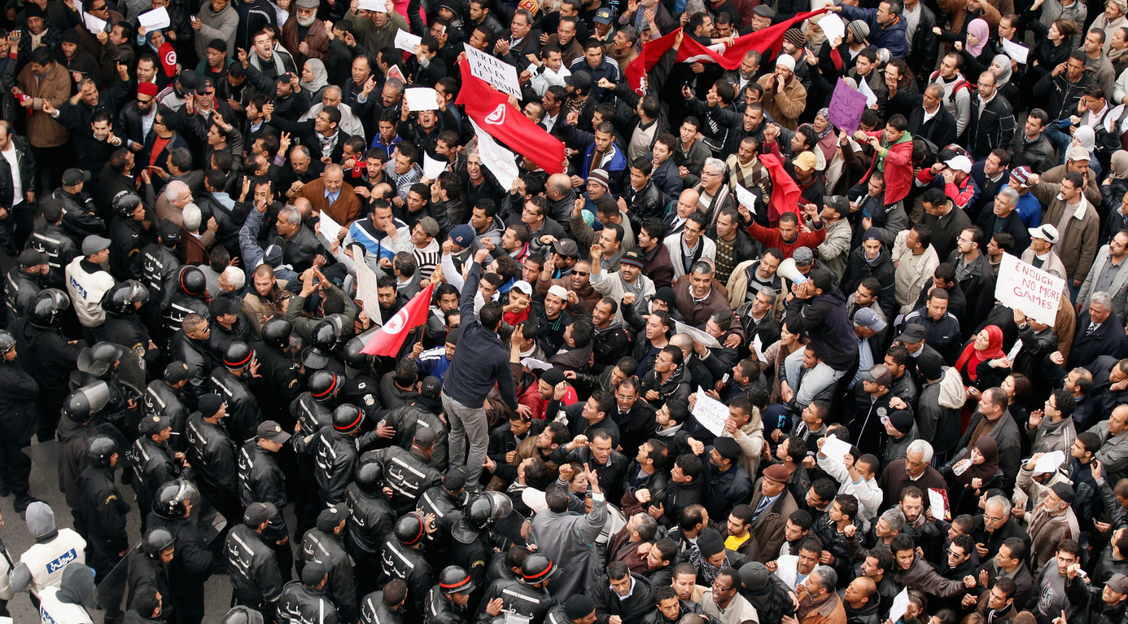The Arab Spring - a critical analysis

If politics – in the sense of the practice of politics – is, as Bismarck declared, an art, not a science, the study of politics is and must be a branch of criticism. Like other branches – literary criticism, music criticism, theatre criticism etc. – it must obey certain standards of intellectual rigour if it is to be of any worth. These requirements include respect for the evidence and for the rules of reasoning and a commitment to objectivity.
An additional but essential element of a critical analysis is that the author takes responsibility for his or her own judgments. A striking feature of international commentary on the Arab Spring has been the degree of uniformity of its main features, the extent to which it has resembled a chorus. I am suspicious of choruses where understandings of political history are at stake. I have made my own judgments and defend them here.
A central issue in the consideration of the Arab Spring is the validity or invalidity of the label of ‘revolution’ when affixed to these events. That the Arab Spring was a series of revolutions became the orthodoxy of international academic as well as media coverage very quickly. I was in no doubt that what had occurred in Tunisia was a revolution. But I was strongly inclined to scepticism where Egypt was concerned, not to mention Libya and Syria.
…
In early 2011, when I was due to return to my old post as director of the International Crisis Group’s North Africa Project, I was invited to have breakfast with a delegation from the Open Society Foundation at the Semiramis Hotel on 24 January. Ben Ali had fallen ten days earlier and my hosts wanted to know whether comparable upheavals were in prospect elsewhere. I told them that we could certainly expect uprisings encouraged by the Tunisians’ success and to their question, ‘Where next?’, I replied, ‘Here.’ I explained that, while Egypt was a very different country, with a different form of government and state–society relationship from Tunisia, it resembled Tunisia superficially at that juncture in that it too had an aged autocrat whose legitimacy was challenged by the charge that he was subordinating the presidency to the interest of his family by trying to ensure his son, Gamal Mubarak, succeeded him (as Ben Ali had let his office be damaged by the ruthlessly self-aggrandising activities of his second wife, Leila Trabelsi).
Moreover, this was happening just a few weeks since the brazenly rigged legislative elections of November–December 2010, calamitously mismanaged by the president’s son and his cronies, and at a time of widespread distress over the decline of living standards for millions of Egyptians in the wake of the 2007–8 global financial crisis. I told them the eventual outcome would be determined by the differences between Egypt and Tunisia but that the short term would be shaped by the superficial similarities. I did not know that demonstrations had been planned for the following day but, aware of Gamal’s limitations, the army’s hostility to his succession and the deteriorating economy, I had been expecting serious unrest in any case since long before the uprising in Tunisia got under way.
That Egypt, Libya and Syria could not really emulate Tunisia did not mean that they could not have revolutions of their own, each with its own dynamics and trajectory. But the fact that the uprisings in these countries resembled past revolutions in formal terms, displaying some of the sound and fury and spectacular street theatre so often associated with the idea of revolution, did not signify much to my eyes, despite my sympathy for the protesters and my admiration for their courage.
In assessing these uprisings, the question I asked concerned not their form but their substance, and it was this: are they really on course to transcend the political and constitutional framework of the authoritarian rule they are denouncing? This was the litmus test in my opinion. While wholly opposed to the military intervention in Libya, I was at first open-minded about the secretive and accordingly difficult to appraise leadership of the so-called Transitional National Council and adopted a wait-and-see attitude to it. Where Egypt was concerned, the question was whether the rising would put paid to the underlying premise of Mubarak’s autocratic presidency, the Free Officers’ state. It became clear within days that this was not in prospect and that, whatever the ‘revolutionaries’ thought they were doing, they were in fact facilitating a renewal of the Free Officers’ state by complementing the generals’ manœuvres to recover the controlling role that Mubarak had long denied them.
…
Western discussion of events in the Arab world since 25 January 2011 has been characterised by a degree of confusion, to which media and academic fashions have contributed, about what is being discussed. The confusion is illustrated by the existence of three different names – the ‘Arab Spring’, the ‘Arab Uprising (or intifāda)’, and, using the plural, the ‘Arab Uprisings (or intifādāt)’ – for the series of events in question. The first is the name the Western media gave this series; the second the name preferred by some journalists and many academics, especially those concerned to emphasise the role of the Arab insurgents in order to credit this with revolutionary significance; as Marc Lynch formulates this thesis in The New Arab Wars: Uprisings and Anarchy in the Middle East (2016), ‘The Arab uprising was a singular event, uniting the entire Arab world within a single, incredibly potent narrative of the possibility of change.’ The third names these events in sober and factually accurate terms – uprisings did, after all, occur – but does not emphasise the linkages between them. In the light of the eventual calamitous outcome, ‘the Arab Spring’, viewed from one angle, can be seen to be the name of a hallucination, shot through with wishful thinking, which precluded a lucid appreciation of the events in question. The ‘Arab Uprising/intifāda’ does not necessarily encumber itself with wishful thinking (although some of those who use it contrive to do this) but, by employing the singular, attributes an essential – rather than contingent and contrived – unicity to the series of events it names, and so proposes its own way of mystifying them.
The only thing that had, from the outset, an intrinsic unity in the wake of the Tunisian revolution was the shock wave that spread out from it. What would happen once that wave made landfall in different parts of the highly variegated political topography of the Middle East and North Africa was bound to be a plurality of distinct situations with sharply differentiated implications, by no means necessarily promising ones. What gave a subsequent unity to these situations was the overarching construction placed upon them. In so far as talk of the ‘Arab Uprising’ tended to credit them with a uniform revolutionary potential, it was, if anything, even more of an hallucination than the talk of ‘the Arab Spring’, which is why I have come, reluctantly, to regard the latter as the appropriate term to use, on one condition. This is that the Tunisian case is understood not to belong to the series to which the term refers, because the Tunisian revolution was not only prior to the shock wave that founded this series but also determined by quite other logics.
‘The Arab Spring’ names not only the edifice of wishful thinking with which the Western media and many academics misinterpreted these events as they unfolded but also the construction of policy that was erected, to great effect, on these several risings, depending on them the way a bridge depends on the foundations built into the river bed on which the pillars which support the bridge themselves rest. This bridge was constructed not by any of the insurgents but by external powers in every case, and what its arches, so glittering when viewed from afar, actually spanned was the distance between the condition of the Middle East as it was in late 2010 and the landscape of desolation it has since become.
What the rebellions came to have in common, over and above the shock wave that generated them, was the way they were subsequently inflected by external actors and the way the dynamics of co-optation and confiscation interfered with and overlaid the original dynamics of the conflict between the domestic forces in contention, whereas the latter alone determined the onset of the revolutionary situation in Tunisia and its provisional outcome.
— An edited excerpt from Loved Egyptian Night: The Meaning of the Arab Spring by Hugh Roberts
[book-strip index="1" style="buy"]
